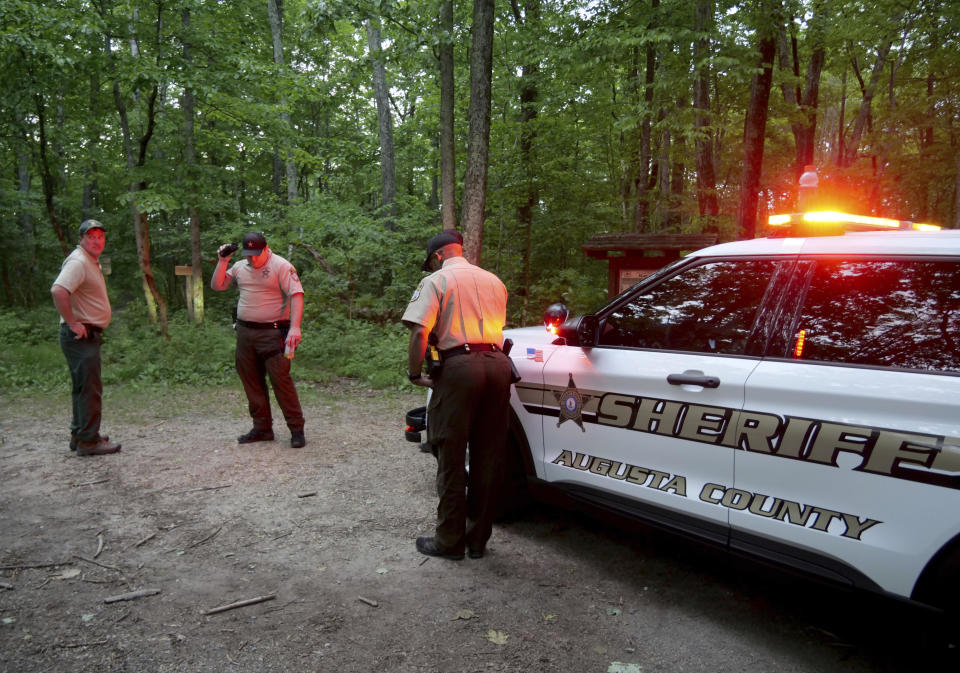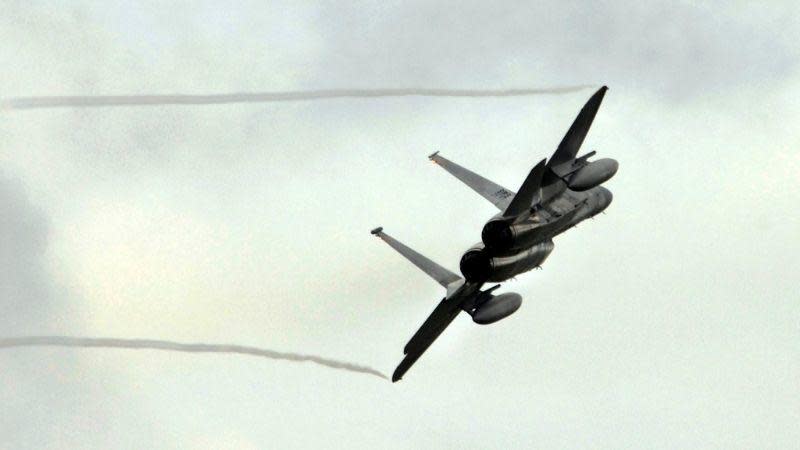What is a sonic boom, and how does it happen?
Residents of Washington, D.C., and parts of Virginia were startled on Sunday afternoon by an explosive noise that reverberated overhead, which officials later confirmed was a sonic boom produced as United States military jets flew at high speeds across the area.
The North American Aerospace Defense Command (NORAD) said in a statement that it deployed the F-16 fighter jets after authorities detected an unresponsive Cessna 560 Citation V aircraft, a private plane, that had entered restricted airspace over a section of the capitol where some national landmarks are located. They were ordered to intercept the Cessna because its pilot did not respond to radio transmissions and was following "a strange flight path," a U.S. official told CBS News. The military scramble was conducted by the 113th Fighter Wing of the D.C. National Guard, the official said.
"The NORAD aircraft were authorized to travel at supersonic speeds and a sonic boom may have been heard by residents of the region," NORAD said in a statement. The bureau also said at the time that flares were used in an effort to gain the pilot's attention, and they may have been visible to the public as well.
The Cessna later crashed into mountainous terrain near Montebello, Virginia, the Federal Aviation Administration said. The agency confirmed on Monday that four people, the pilot and three passengers, were killed in the crash, which federal authorities are investigating.

The sonic boom heard and in somes cases recorded by people across D.C. and Virginia was reminiscent of others produced by military fighter jets that rattled communities in other parts of the country in recent years.
In 2021, an F-16 jet corrected course while flying over central Illinois, creating a large sonic boom as it broke the sound barrier. The sound shook neighborhoods in Illinois and Oregon, where residents said they feared an earthquake had struck. Aircrafts are not alone in their ability to produce a sonic boom. In 2020, a meteor that disintegrated as it fell from the sky caused a sonic boom that people felt from the Canadian province of Ontario down to Virginia, the American Meteor Society reported at the time.
What is a sonic boom?
The loud, blaring sound that people on the ground can hear and sometimes feel when an aircraft or a meteor flies overhead at supersonic speeds is called a sonic boom, according to NASA.
Supersonic refers to the speed of an object traveling faster than the speed of sound, which is about 761 miles per hour, or 1,100 feet per second, in dry air when the temperature is roughly 60 degrees Fahrenheit at sea level. Scientists determined this measurement based on what they consider "standard" atmospheric conditions. Approximating the distance of a lighting strike during a storm is one of its more practical uses.
Noise produced by a sonic boom is often likened to a jolting clap of thunder or an explosion, and many people who heard the boom on Sunday turned to social media wondering whether the latter had occurred. The sound is generated by shock waves that ripple through the atmosphere when air particles are displaced by a vessel of some kind, like a military jet or a spacecraft, that is moving rapidly.
Was that a sonic boom or an explosion? I thought the house was coming down here in Edgewater MD. In this video you can see it even popped up my attic access panel, then you can hear the house shaking for a few seconds. #explosion #sonicboom #boomhttps://t.co/A7lwXiu9ht
— BlitzKryg (@JudginNGrudgin) June 4, 2023
Technically, the sonic boom heard overhead in Washington, D.C., and parts of Virginia was created by aircrafts traveling at hypersonic speeds. A grade higher than supersonic, the term hypersonic refers to the speed of an object traveling more than five times the speed of sound in standard conditions. Further down on the spectrum are subsonic and transonic, which are used to describe scenarios where objects are traveling either much slower than, or near, the speed of sound.
Modern commercial flights typically fly at speeds that fall within the transonic range, although the now-retired Concorde plane was one of the world's first commercial supersonic airliners.
What causes a sonic boom?
A sonic boom happens when any flying object disrupts the structure of the air surrounding it, while moving faster than the speed of sound. Aerodynamicists — experts who study the motion of air and how it reacts to foreign bodies — explain this phenomenon as a byproduct of shock waves created by the object pushing aside air molecules in its path with great force, similar to the way a ship creates waves while traveling across the sea.
As high-speed aircrafts displace the molecules around it, each leaves a "cone" of pressurized air in its wake that extends to the ground, according to NASA. The release of pressure from this "cone" along the flight path is acute and heard as a sonic boom. Although the change in pressure is relatively small, about the same as the change that can be felt when riding an elevator down a couple of floors, when it happens very quickly and consistently, the rate of pressure change shoots up and creates a roaring sound.

Because larger and heavier aircrafts displace more air and generate bigger shock waves than smaller and lighter ones, the launch of a space shuttle, for example, will produce a sonic boom that is more distinct than that of a fighter jet. In the case of a spacecraft taking off, two sonic booms may be heard from the ground — one produced at the nose and another at the tail.
How far away can a sonic boom be heard?
The intensity of a sonic boom can vary depending on several factors, including the size and shape of an aircraft, exactly how fast it is moving and whether it makes turns along its trajectory. But the altitude of the aircraft is key, since shock waves generated at high altitudes need to travel longer distances before reaching the ground. Scientists have determined that the width of the pressurized "cone" extending down to land from beneath a high-speed aircraft is about one mile for every 1,000 feet of altitude. So, an aircraft flying at supersonic speeds at an altitude of 50,000 feet will generate sonic booms for 50 miles on the ground.
How loud the sound is within that area can vary. In general, scientists say that sonic booms decrease in intensity as pressure cones widen with increasing altitudes, and vice versa. But even then, people standing in different places along an aircraft's path on the ground will experience the sonic boom differently.
The intensity of a boom peaks directly below the moving aircraft and decreases steadily while sound travels diagonally toward the ground in all other directions, creating the "cone." The sound tapers off and eventually stops altogether as shock waves generated by supersonic travel hit the ground and bounce upward, in a process called refraction.
Miami Heat evens up the series against the Denver Nuggets
"Great Resignation" is over -- here's what that means for U.S. economy
Prince Harry's a no-show on first day of phone hacking trial

